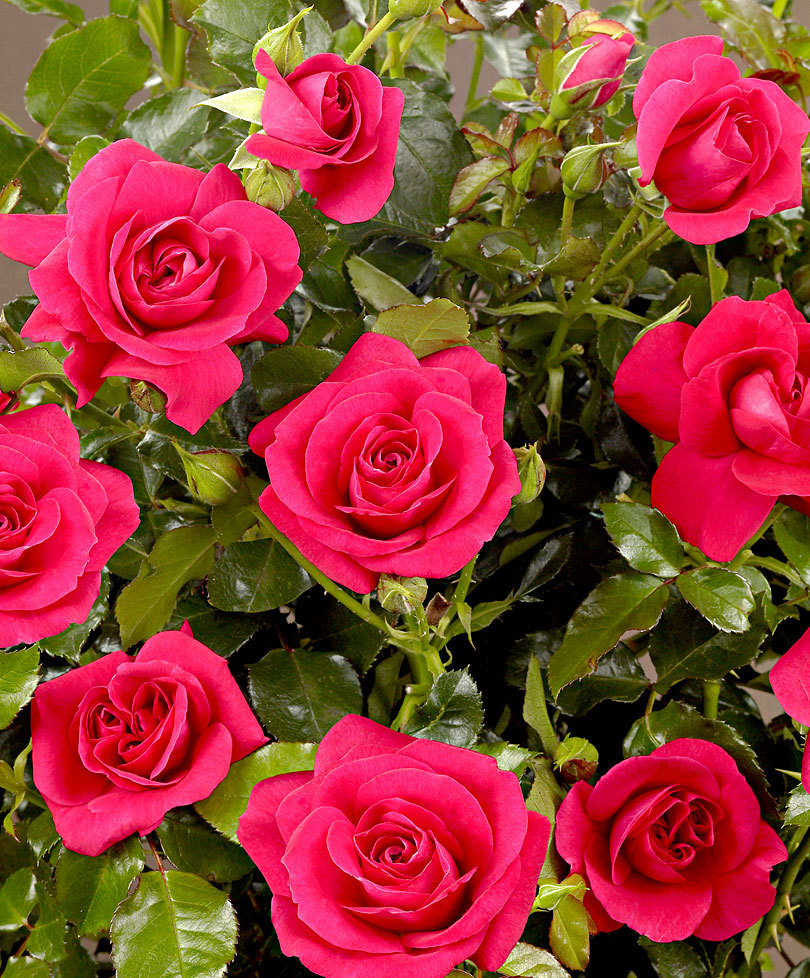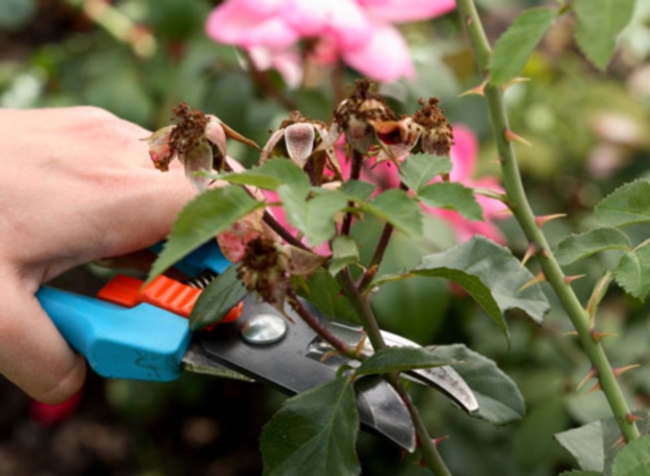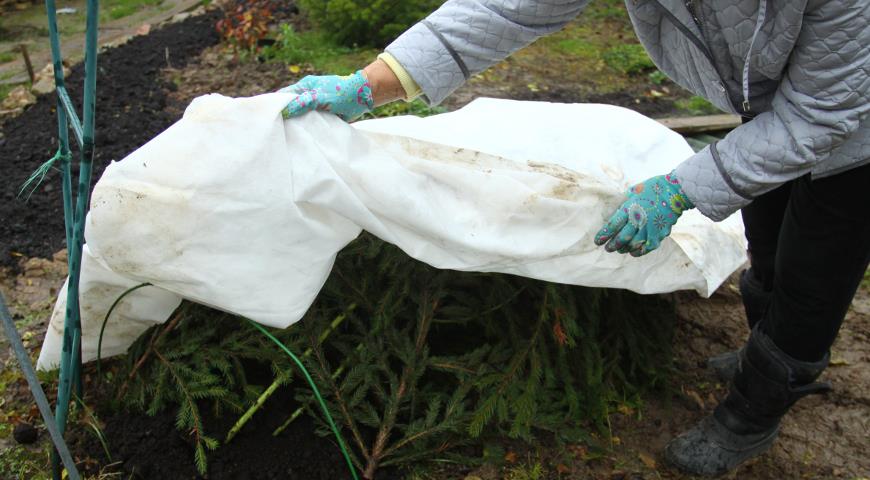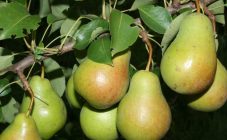Content:
Climbing roses will be a magnificent decoration of the site. Flowers will effectively fill empty spaces in the courtyard, bring a fabulous touch and hide the unattractive details of the territory. The main advantages of climbing shrubs are their unpretentiousness and resistance to temperature extremes.
Curly roses blooming all summer: winter-hardy varieties
Below are the roses of continuous flowering, the varieties of which perfectly tolerate frost.
- Flammentanz- semi-pebble frost-resistant ground cover shrub, the shoots of which look long and massive. The dark crimson flower has a double texture. The diameter of a blossoming rose reaches 8-9 cm. The aroma is very delicate and barely perceptible. Roses delight with their flowering only one summer.
- Golden Gate... Flowers with thorns, characterized by a large number of shoots, the length of which can reach 4-4.2 m. The buds of the shrub are collected in a brush. The flowers are colored yellow. Their structure is velvety, and their diameter reaches 10 cm. Golden Gate has an amazing aroma reminiscent of tropical fruits. Shrubs of this variety require good shelter from lingering rains and winter frosts. A variety of a plant with thorns is susceptible to a variety of ailments. In addition, it is often damaged by pests.
- Golden Gate Sympathie... The chic bright red buds of this variety will not leave indifferent any grower. The length of the shrub can reach 3 m, and the width of the plant is within 1.8-2.2 m. Flowers collected in a small brush can be of different diameters. Golden Gate Sympathie is growing rapidly and endures negative factors steadily. Unfortunately, the plant has a significant disadvantage. A large number of buds with bright petals will decorate the summer cottage only in the first year. In subsequent years, the number of buds will decrease significantly.
- Ilse Krohn Superior- a variety that tolerates prolonged rains, winter frosts and pests. Ilse Krohn Superior is a climbing rose of continuous flowering. It has large flowers, the diameter of which sometimes exceeds 15 cm. The massive buds of a milky shade look delicate, the stems are rather short. The length of the shrub rarely exceeds 2.2 m. The bushes look lush and spreading.
- Laguna- a kind of rose, which is distinguished by a cluster-like flowering and a pronounced extremely pleasant aroma. The petals of the plant have a velvety texture and are colored in a delicate pink. The lagoon is practically not susceptible to pests and rarely gets sick. It is very important to cover the shrub for the winter.
- Super Excelsa- a kind of double roses, painted in bright shades of fuchsia. The diameter of the flowers is within 4-5 cm. The brush becomes large during flowering. The maximum length of the stems reaches 3.5 m. Roses perfectly tolerate the sultry heat and prolonged winter frosts. Experts recommend planting seedlings in a shady part of the yard so that the buds do not lose their color saturation due to direct contact with the sun's rays.
- Snow Goose differs in miniature white flowers, which are concentrated on each of the brushes, 10-15 pcs. The foliage of the plants is small and dark, and there are practically no thorns on the branches. The main advantage of the variety is the continuous flowering. Roses are ideal for decorating a vertical surface.Plants do not need special care. These are the longest flowering roses.
- Super Dorothy- a frost-resistant, unpretentious variety that begins to bloom at the end of May. The bush length often exceeds 3 m, and the width is within 1.2 m. The bright green foliage looks very impressive against the background of crimson roses (other shades may also occur).
- Rambling Rector- a variety that changes the shade of the petals. Gradually, the ivory-colored buds acquire a charming snow-white. Each brush can contain more than 40 flowers. Often the length of the bush can reach 5.5 m. The variety does not need a dense shelter from winter frosts. The bushes tolerate high temperatures well. They can be easily grafted. A flower bouquet from this variety will look very impressive.
- Santana... Bright red roses are not subject to fading in the sun. The flowers of plants with thorns are large, the diameter of one open semi-double bud can reach 11 cm. The shrubs grow up to 3 m in length. The variety is not capricious and can withstand bad weather conditions. The long flowering period is a definite advantage. The rose blooms in early June.
- Polka- very large roses, the diameter of which is within 15-16 cm. Delicate coral or apricot flowers are abundantly located on low bushes, the length of which barely reaches 2 m. Can bloom up to 3 times in one season. A significant advantage is the resistance of plants to ailments. It is very important to insulate the bushes before the winter cold. The smell of the buds is very delicate.
- Don Juan- an interesting name for an unpretentious variety of climbing rose, burgundy flowers of which are abundantly located on large bushes. The length of the shrub reaches 3.5 m, and the width does not exceed 2 m. The variety does not need shelter for the winter and is not susceptible to diseases. The scent of flowers is retained for the entire current flowering period.
Climbing rose constantly blooming: the best varieties
These include the following varieties:
- Avila Palace;
- Iceberg - floribunda that looks spectacular due to chic long branches;
- Faya Lobby is climbing;
- Prairie Joy - Canadian selection roses;
- Coral sunset.
The abundance of varieties allows each grower to choose the variety that will look best on the site.
Planting and leaving
Climbing roses - varieties of constant flowering - prefer sunny areas located on the south side. Thanks to good lighting, the growth of growth is accelerated, and already the next summer after planting, you can observe abundant flowering. It is unacceptable to plant young plants in the lowlands, since the rose does not tolerate stagnant moisture well.
Experts advise planting bushes in the spring months at sunset. In the fall, seedlings do not have time to adapt and most often die.
Continuously blooming rose varieties will decorate the site and do not require complex maintenance.
Planting process:
- The first step is to prepare the holes, the size of which should be within 50 × 50 cm.
- The prepared hole is filled with water.
- The seedling is planted in a hole, which is covered with soil and compacted. If you cut the aboveground part of the plant by 15 cm, you can be sure of rapid growth and rich flowering in the future.
In the following years after planting, the seedlings do not require complex care, however, it is important to carry out in a timely manner:
- pruning bushes;
- watering;
- fertilization.
By pruning shrubs, you can give your plants the desired shape. It is recommended to water the roses every 7-8 days, and add organic matter and minerals to the soil as a top dressing.
Climbing rose pruning
With timely pruning, the plant becomes powerful. In addition, due to this procedure, you can embody any design ideas and give the bushes a unique image.
With proper care, you can achieve good growth of young shoots in the first year after planting.
Almost all varieties of climbing roses need shelter for the winter. As soon as the threat of spring frost has passed, you should open the bushes, cut off the dead or frozen part of the plant.
The longest part of the shoots should be spread on the surface of the ground, which will make it possible to consider the replacement shoots. Tying the bush to the supports is possible only after the length of the shoots reaches 70-75 cm.
Old shoots are replaced by several fresh ones. As a rule, a small part (2-3 pcs.) Of annual branches and about 4-5 biennial branches are removed.
In cases where the rose pleases with its flowering several times in one season, the flowering shoots should be left for several years. They begin to weaken only at the 5th year of life.
Preparing climbing roses for winter
Roses that bloom all summer are considered winter-hardy plants, but most varieties still need shelter for the winter. Under each flooring, it is necessary to ensure the presence of an air gap, otherwise the bush will die not from frost, but from the drying out of the root system.
It is recommended to start preparing plants for cold weather at the end of August. To do this, you should stop loosening the soil, watering the flowers and applying fertilizers. As soon as the night temperature reaches -4 ° C, it is recommended to start covering the shrubs. Previously, you should not do this so that the plants do not start getting wet inside from excessive heat.
Preparation for shelter is carried out in stages in dry, sunny weather:
- Flowers and foliage are removed from the bushes.
- The damaged part of the rose is cut off.
- Next, you should tie the lashes and press them to the ground with a special device. As a rule, wooden boards are used for shelter.
Reproduction of a climbing rose from cuttings
Reproduction of roses occurs mainly by green cuttings. Rooting in this case occurs 100%. Summer and winter cuttings are selected for grafting. It is best to start breeding in early summer.
The cutting is watered every 7-10 days, little by little. Growth funds are optional.
With proper care, the climbing rose will become a real decoration of the country house and will delight with abundant flowering every season!















